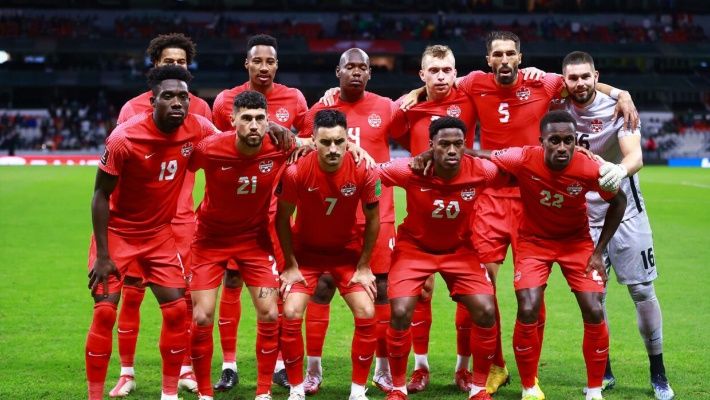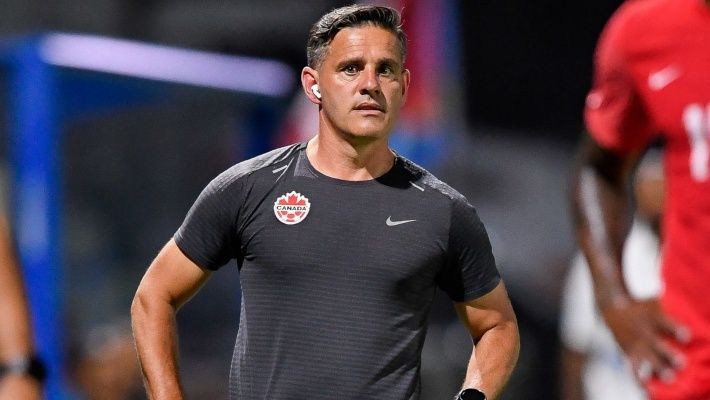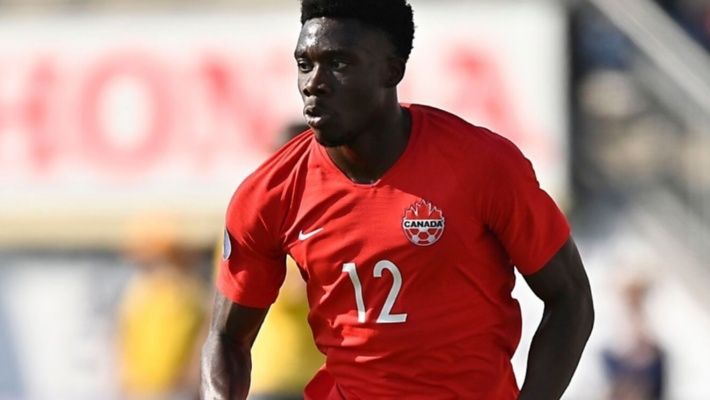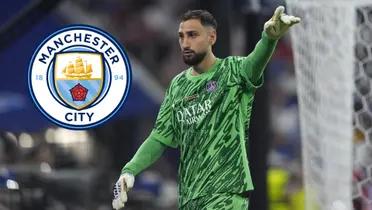When did Canada last qualify for the World Cup?
The North American team leads the CONCACAF qualifiers and is one step closer to Qatar 2022.

In Canada, ice hockey has always been the most popular sport, but in recent years, soccer has replaced it, and while the women's national team is the current Olympic champion, the men's team is getting closer and closer to playing in its second World Cup and leads the Concacaf Octagonal ahead of the United States and Mexico.
More Qatar World Cup News:
Which teams have already qualified for the World Cup?
The last time Canada had qualified for the final Hexagonal, which qualifies three teams directly to the World Cup and the fourth for a playoff, was for France 1998, but they finished last and with only one victory, a far cry from the current campaign, under English coach John Herdman, the same man who first had a resounding success with the women's team.

In October 2012, 9 years ago, when Honduras beat Canada 8-1 to qualify for the Brazil 2014 World Cup, marked the beginning of the fall into the deepest pit as they reached sixteen matches without success and dropped to 122nd place in the FIFA ranking.
Things did not improve for the qualifying to Russia 2018 under Ecuadorian Octavio Zambrano, who lasted from March 2017 to January 2018, and after the World Cup, they decided to hire Herdman, after his excellent time with the women's team.
From that point on, the goal was always to have a competitive team for the 2026 World Cup, in which Canada will share the venue with Mexico and the United States, but the good times came early and the good results began to appear, to reach the highest historical position in the FIFA ranking, 40th.
When did Canada last qualify for the World Cup?
After five trips to the World Cup without reaching the final stage, Canada has regained its place in North America. They are undefeated in this entire process (they have twelve consecutive matches without losing) and have the chance to return to a World Cup that they only reached in Mexico in 1986. Then, they were eliminated with a clean sheet in a tough group with France, Hungary, and the Soviet Union in their only participation to date. Thirty-six years later, they are ready to return to the elite.
With four games remaining in the qualifying tournament for the Qatar 2022 World Cup, Canada are the leaders with 22 points, followed by the United States and Mexico, both with 18 points (the three that are currently qualified for the World Cup), while Panama, with 17 points, are in a playoff spot.

John Herdman's words
"Canada is a sleeping giant. It's a major ice hockey country," admits coach John Herdman, "but soccer is the most widely played sport and it's ready to break into the fans. The women's team had been very successful but the boys are just starting to catch up". The English coach won 72 percent of the 36 games he coached.
“Canada, -Herdman insists in an interview he gave to the BBC in London-, is a country of 40 million people, and improving was only a matter of time. It is a country with a lot of immigration, especially from Latin America and Africa, which brings a passion for soccer. That mix of cultures and the investment in the sport favored its development and made it surpass even ice hockey licenses”.

The turning point for soccer in Canada
For writer and podcaster Duane Rollins, considered one of Canada's leading soccer specialists, the turning point "was in 2007, when MLS came to the country because, in a way, it professionalized the whole system and academies began to emerge" and he points especially to one leader, Don Garber, the commissioner who brought the American tournament to Toronto almost fifteen years ago.
That situation put an end to what Rollins calls "the dark years" and four years ago another competition was created, the Canadian Premier League (CPL), the first national league since 1992, with eight participating teams and fully professional.
“The CPL wouldn't exist without MLS," Rollins says. Since then, a lot more money has been invested because people have become much more involved in soccer. Most of the Canadian national team players, in fact, play in MLS, where there are three Canadian teams, from Toronto, Montreal, and Vancouver.
More Canada News:
USMNT vs. Canada: Sam Adekugbe kills Stars and Stripes with a goal
More news

THE GANG IS HERE! First Argentine Stars Arrive in Buenos Aires for Final Qualifier Push!
01/09/2025

THE LAST DANCE! Lionel Messi Confirms His Final World Cup Qualifier in Argentina!
29/08/2025

TRANSFER COLLAPSES! Julio Enciso Fails Medical Exams, Returns to Brighton!
27/08/2025

Vini doesn't feel entirely comfortable at Real Madrid anymore and is seeking a future at another club
26/08/2025

HERE WE GO! Piero Hincapié Says YES to Arsenal, Club Prepares Final Bid for Leverkusen Star!
26/08/2025

THE REAL MADRID SHOWDOWN: Nico Paz's Future Sparks a Bidding War Across Europe!
25/08/2025

SOUTH AMERICAN SHAME: Independiente vs. U. de Chile Match Canceled After Horrific Incidents!
21/08/2025

Rodrygo Benched by Xabi Alonso: The End of an Era at Real Madrid?
20/08/2025

PARIS IN PARIS! The New Superclub, Paris FC, Rises to Threaten PSG-Marseille Rivalry!
20/08/2025

PSG’s €850M Budget is 30x Larger Than the Smallest in Ligue 1!
19/08/2025

THE DEBUTS ARE HERE! Estupiñán & Modrić Step Onto the San Siro Stage!
18/08/2025

CONTROVERSY IGNITES! Barcelona Opens Season with a Contested 2-0 Victory Over Mallorca!
18/08/2025

SCANDAL ESCALATES: Donnarumma's Harsh Letter Responds to Luis Enrique's Super Cup Snub!
15/08/2025

Franco Mastantuono: A New Number 30 for Real Madrid with a Nod to the Past
14/08/2025

HISTORY MADE! PSG Wins First-Ever Super Cup Title in Thrilling Penalty Shootout!
14/08/2025

Mastantuono Arrives at Valdebebas for Real Madrid Presentation
13/08/2025

ON AND OFF THE PITCH: Is Nicki Nicole the New WAG of Barcelona's Lamine Yamal?
13/08/2025

Donnarumma Bids Farewell to Paris Saint-Germain at the Peak of His Career
13/08/2025



